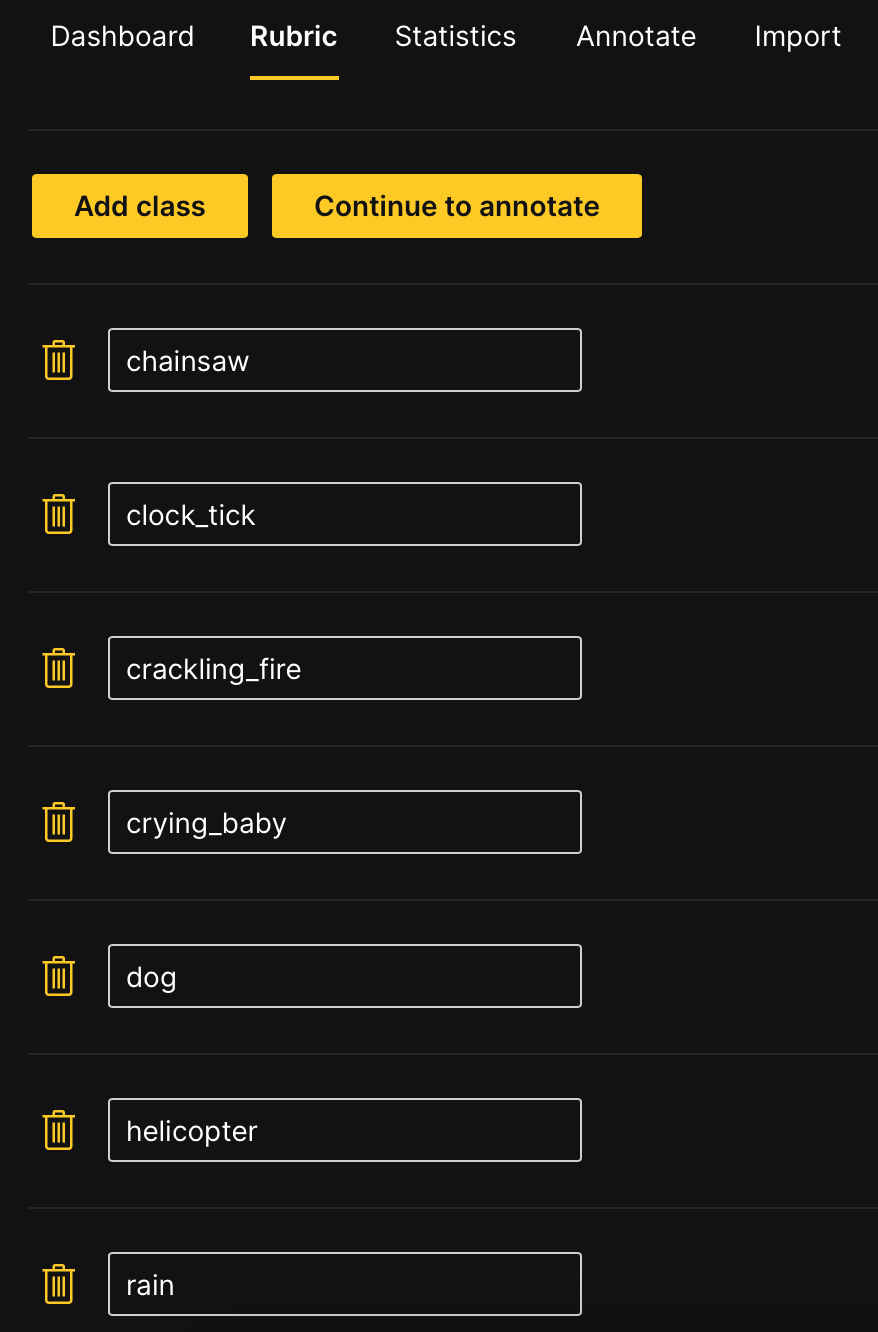Tutorial 1C: Annotation task: Audio classification
This tutorial will underline the steps (process) of annotating and specifying an annotation task rubric for an audio classification annotation task. This tutorial will also quickly explore how you can download the fully annotated dataset supported in H2O Hydrogen Torch.
Step 1: Explore dataset
We will use the preloaded esc10-audio-demo demo dataset for this tutorial. The dataset contains 400 audios, each depicting the sound of a chainsaw, dog, helicopter, rain, rooster, etc. Let's quickly explore the dataset.
- On the H2O Label Genie navigation menu, click Datasets.
- In the datasets table, click esc10-audio-demo.

Step 2: Create annotation task
Now that we have seen the dataset let's create an annotation task that will enable you to annotate the dataset. An annotation task refers to the process of labeling data. For this tutorial, an audio classification annotation task refers to assigning a categorical target label to an audio clip. Let's create an annotation task.
- Click New annotation task.
- In the Task name box, enter
Tutorial 1C. - In the Task description box, enter
Annotate dataset containing samples of environmental sound. - In the Select task list, select Classification.
- Click Create task.
Step 3: Specify annotation task rubric
Before we can start annotating our dataset, we need to specify an annotation task rubric. An annotation task rubric refers to the labels (e.g., object classes) you want to use when annotating your dataset. For our dataset, there are multiple categorical target labels we want to specify, chainsaw, clock_tick, crackling_fire, crying_baby, dog, helicopter, rain, rooster, sea_waves, sneezing. Let's define the annotation task rubric.
- In the Class name box, enter
chainsaw. - Click Add class.
- In the new Class name box, enter
clock_tick. - Repeat the above steps until you create all labels.

Step 4: Annotate dataset
Now that we have specified the annotation task rubric, let's annotate the dataset.
- Click Continue to annotate.
In the Annotate tab, you can individually annotate each audio clip in the dataset. Let's annotate the first audio. In this case:
-
Select clock_tick.
NoteAs you annotate the dataset, you can select which label to use depending on the sound you hear in the audio.
-
Click Save and next.
Note- Save and next saves the annotated audio
- To skip an audio clip to annotate later: Click Skip.
- Skipped audio clips (samples) will reappear after all non-skipped audios are annotated
Export annotated dataset
After annotating all the audio clips, you can download the dataset in a format that H2O Hydrogen Torch supports. Let's download the annotated dataset.
-
In the Annotate tab, click Export annotated samples.
 Note
Note- In the Dashboard tab, you can download annotated audio clips at any point in the annotation process. To download all annotated audio clips so far, consider the following instructions:
- Click the Dashboard tab.
- Click Export approved samples.
- H2O Label Genie downloads a
.zipfile containing the annotated dataset in a format aligning with the dataset's problem type (annotation task type). To learn more, see Downloaded dataset formats: Audio classification.
- In the Dashboard tab, you can download annotated audio clips at any point in the annotation process. To download all annotated audio clips so far, consider the following instructions:
Summary
In this tutorial, we learned the process of annotating and specifying an annotation task rubric for an audio classification annotation task. We also learned how to download a fully annotated dataset supported in H2O Hydrogen Torch.
Next
To learn the process of annotating and specifying an annotation task rubric for other various annotation tasks in computer vision (CV), natural language processing (NLP), and audio, see Tutorials.
- Submit and view feedback for this page
- Send feedback about H2O Label Genie to cloud-feedback@h2o.ai